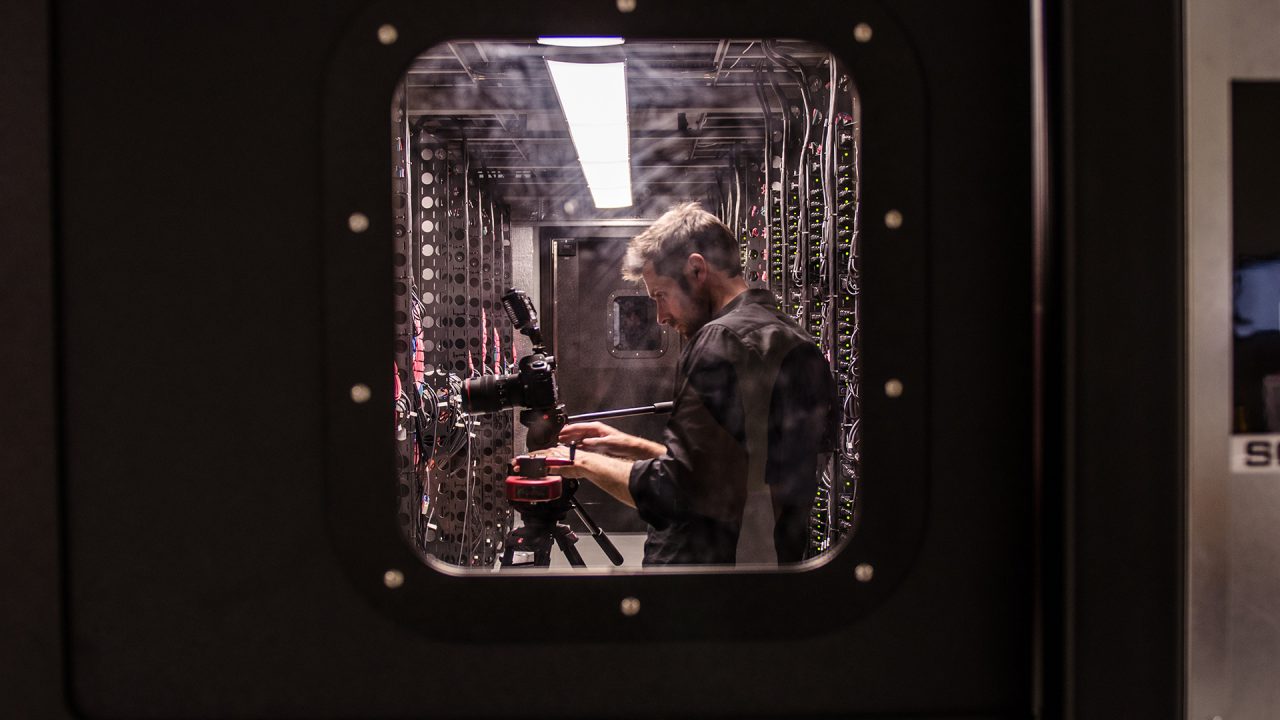“Trust me.” That probably didn’t work with your high school math teacher, who typically required you to “show your work.” Journalists wanting to improve trust with the audience could apply the same logic. This question of how to build trust in reporting led to a transparency experiment here at Cronkite News at ASU called “Full Circle,” which documented the process of putting the story together, culminating in the story itself that aired on TV. More: Show Your Work to Restore Trust in News
The assumption was that showing the process of reporting a story would increase trust. But is that true? This summer, ASU Cronkite School graduate student Lynsey Amundson set out to measure the effectiveness of this method of transparency reporting to see if we could identify, and quantify, audience preferences for this style of storytelling. I supervised her graduate project and am pleased to share, with her permission, the key findings.
Methods
Amunsen identified a broadcast story and tested both the standard broadcast package and then the longer “Full Circle” version. The videos were shared in an online survey that also posed five questions related to trust and transparency. 100 respondents watched and completed the survey for the standard package. For the Full Circle package, 76 (*) respondents watched and completed the same set of questions, as well as several open-ended questions about the longer transparency format. Within the limits of this graduate project, the survey sample was not controlled to be random, but respondents were roughly equal in distribution across both gender and age. So while the exact numerical results would need further testing to validate, the overwhelming difference in ratings suggest there’s every reason to be confident in the general direction of the findings.
Results
The first dramatic finding was that viewers found both the story coverage and the news reporter far more trustworthy when they saw both the story process and the final package (right column) versus when they watched only the standard TV package (left column).
Story trust (standard package vs process plus package):

Reporter trust (standard package vs process plus package)

When you combine the 4 and 5 ratings (“a lot” and “completely”), viewers found the version that included the reporting process created a markedly more trustworthy story (82% vs 25%) and far more trust in the reporter (87% vs 31%).
A second pair of survey questions explored whether the ‘Full Circle’ treatment helped viewers better understand the reporter and newsroom’s editorial process. The answer was, unequivocally, yes.
Editorial Clarity: TV package only versus reporting process plus TV package


Two takeaways jump out from these responses. First, the combined 4 and 5 ratings (“a lot” and “completely” for understanding the editorial and reporter process are a remarkable 80% and 76% respectively. Second, the corresponding highest marks for typical TV reporting package format are abysmal – in this case just 2% and 1% of viewers respectively felt they understood the how/why of the story process, an insight that likely applies to most standard day-turn broadcast storytelling.
Trust as a Loyalty Strategy

Amundsen also explored the ‘loyalty’ question: Would this type of reporting result in a greater likelihood of the viewer choosing that news source again in the future? It’s a question that any GM or News Director should care about, because it connects good journalism with good business. Once again, the answer was a resounding “yes” that transparency led to greater loyalty.
Loyalty: Standard TV package only vs. reporting process plus TV package
Amundsen also included focus-group styled open-ended questions for the longer, ‘Full Circle’ story treatment to gather richer feedback. The suggestions from respondents include four key recommendations that could be applied by any local newsroom looking to incorporate
more transparency into its reporting process. The key recommendations:
- Extend longer than a traditional package but still keep storytelling tight: including the behind-the-scenes process, total story length of 5-6 minutes (Our CN Full Circle experiments, at 8-9 minutes, were judged to be too long by viewers.)
- Apply to politically charged, divisive issues where audiences might otherwise question the balance of the reporting
- Use on-screen graphics or VO to help ‘explain’ some of the ‘insider’ processes and jargon of journalism
- Focus on editorial aspects, like selection of the story angle, why certain interviews were included or excluded, and who refused to speak on the record
Overall, Amundson’s research project had three key insights on trust and transparency:
1. Audiences rated both the reporter and the news organization significantly more trustworthy when the process of reporting was included in the story
2. Audiences reported far better understanding of WHY a story was covered a certain way when the process of reporting was included in the story
3. Significantly for News Directors and General managers, “transparency” was also good for business: Audiences indicated far greater willingness to come back to the same news source in the future when they included their process in their reporting.
In my experience, journalists assume audiences know what we do all day. Audiences do not. In-depth “process” reporting like Full Circle is just one example of how to increase transparency. Simple steps like incorporating more “process” writing is another. We can also do better at sourcing where our story ideas come from, especially if they come from our audience. Perhaps the ‘secret’ to earning audience trust isn’t a new idea at all. Show your work.
